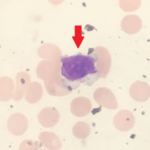 The U.S. National Osteoporosis Foundation recommends vertebral imaging for all women age 70 and older and all men age 80 and older if their bone mineral density T-score at the spine, total hip or femoral neck is less than -1. Healthcare providers in Canada traditionally use the Fracture Risk Assessment Tool (FRAX; an online calculator launched by the University of Sheffield, South Yorkshire, England, in 2008 to calculate the 10-year risk of major osteoporotic and hip fracture) to calculate major osteoporotic fracture probability from bone mineral density over 20% to identify individuals qualifying for osteoporosis treatment. However, FRAX has the disadvantage of generating lower major osteoporotic fracture probability scores in men than women, despite identical inputs.
The U.S. National Osteoporosis Foundation recommends vertebral imaging for all women age 70 and older and all men age 80 and older if their bone mineral density T-score at the spine, total hip or femoral neck is less than -1. Healthcare providers in Canada traditionally use the Fracture Risk Assessment Tool (FRAX; an online calculator launched by the University of Sheffield, South Yorkshire, England, in 2008 to calculate the 10-year risk of major osteoporotic and hip fracture) to calculate major osteoporotic fracture probability from bone mineral density over 20% to identify individuals qualifying for osteoporosis treatment. However, FRAX has the disadvantage of generating lower major osteoporotic fracture probability scores in men than women, despite identical inputs.
Physicians can also use hip and lumbar dual-energy X-ray absorptiometry (DXA) to assess for the presence of vertebral fracture. New research indicates this vertebral fracture assessment can be used in a targeted screen to identify individuals with previously underappreciated vertebral fracture. The research by William D. Leslie, MD, professor of medicine and radiology of the University of Manitoba, Canada, and colleagues performed vertebral fracture assessment on individuals 70 years and older who had a bone mineral density T-score of less than -1.5 on their hip and lumbar DXA scans and found they were able to identify otherwise unappreciated vertebral fracture. Moreover, the lower the T-score, the more likely they were to identify previously unappreciated vertebral fracture. The study, published online in Archives of Osteoporosis, also found pairing the vertebral fracture assessment with major osteoporotic fracture probability calculated with FRAX identified more men as qualifying for treatment than use of the FRAX tool alone. This stood in contrast to women for whom treatment qualification was predominantly based on the FRAX major osteoporotic fracture probability computed using bone mineral density. The authors conclude by suggesting the new data may be helpful in refining vertebral fracture assessment testing criteria in Canada.1
The study evaluated whether the addition of target vertebral fracture assessment of hip and lumbar spine DXA to standard FRAX calculation of the probability of major osteoporotic fracture would help identify women and men aged 70 years and older who would benefit from anti-osteoporosis treatment. The investigators used a clinical registry to evaluate data for individuals selected for bone mineral density testing (7,289 women and 1,323 men). The women were slightly younger than the men (76.7 vs. 77.9 years), but the men tended to have higher bone mineral density T-scores and were less likely to have bone mineral density in the osteoporotic range. Approximately half of the women and one-quarter of the men qualified for vertebral fracture assessment testing, and the ages of the men and women qualifying for vertebral fracture assessment were similar. Of those who were assessed, 13.3% of women and 22.9% of men had a vertebral fracture and the vertebral fracture prevalence increased with lower bone mineral density T-score.

